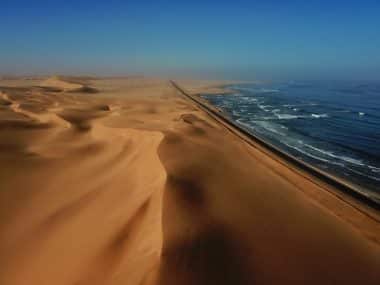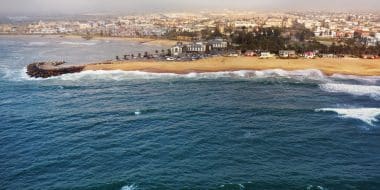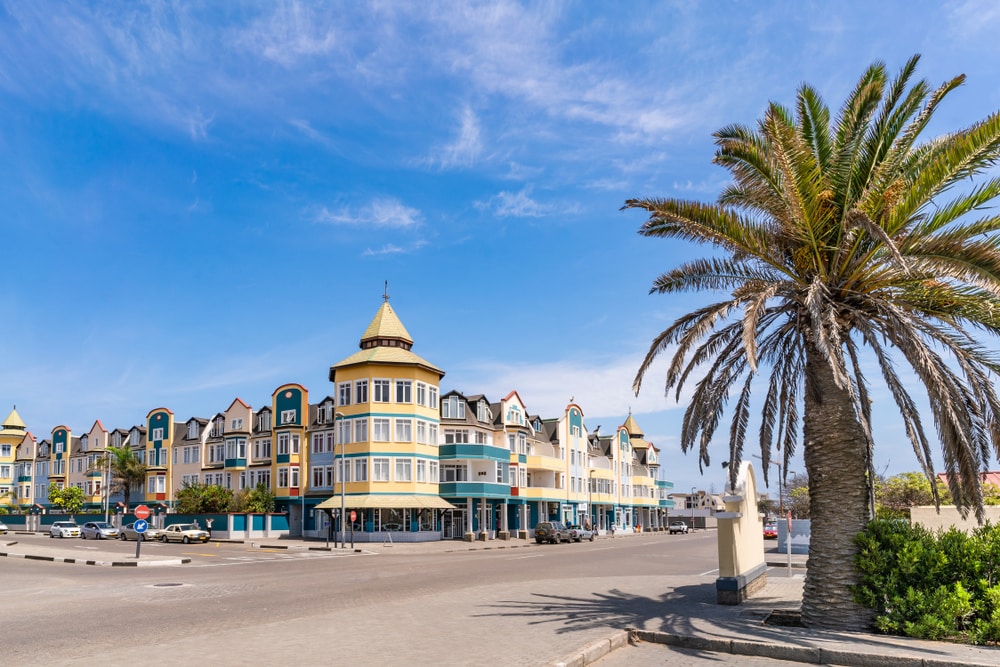Namibia is a magical African country with a rich tradition. German tourists in particular often come here. Many of them would like to find out more about the colonial history of the former German colony. But that’s not all Namibia has to offer. The coastal town of Swakopmund in particular attracts numerous tourists who are into action and adventure. Because here there are impressive lunar landscapes, offshore adventures and an uncharacteristically moderate climate for the otherwise very hot region. Swakopmund is therefore worth more than just a stopover on a round trip through Namibia. Holidaymakers can easily stay for a whole week in the regional capital of the Erongo region, which has around 45,000 inhabitants.
Climate and travel time

Swakopmund is not only popular with tourists from abroad due to its pleasing climatic characteristics. In the African summer, which extends from March to October, many locals also recover here from the otherwise omnipresent heat of the country. Swakopmund is always about ten degrees cooler in summer than most other places in Namibia. Responsible for this is the location of the city directly on the Atlantic Ocean. This ensures stable and mild temperatures, which rarely fall below 15 degrees all year round. In summer it rarely gets hot, usually the temperatures then move around the 20 degree mark.
The water temperatures are usually around 16 degrees, which is why Swakopmund is not necessarily to be understood as a seaside resort. Nevertheless, the palm-fringed and pretty sandy beaches around the city are ideal for beach walks and short swimming adventures. Rain is very rare in the city, there are no more than ten rainy days in a whole year. On the other hand, there is occasionally high fog, which gives the region a mystical face and makes the hearts of photo enthusiasts beat faster. Because when the high fog moves through the city and its foothills, enchanted-looking pictures can be taken that could also come from a fairy tale or horror film.
Discover Swakopmund’s colonial heritage

In the 19th and also at the beginning of the 20th century, a lot of Germans lived in Swakopmund. At that time, the city’s port was considered a transport hub for German immigrants who wanted to settle in the colony of German South West Africa, as Namibia was called at the time. The port was soon expanded by the German colonial occupiers and also used for military purposes. In 1902, an eleven-metre-high red-and-white stiffened lighthouse was built, which is now considered Swakopmund’s landmark. You should also visit the Hohenzollern House, built between 1904 and 1906. The neo-baroque style building used to serve as a hotel, and at times apparently also as a brothel.
If you want to find out more about German colonial history, you can also visit the Swakopmund Museum, founded in 1951, which also provides information about the prehistory and early history of the region. Afterwards, a walk through the architecturally very pretty city center and past the Evangelical Lutheran Church Swakopmund from 1911 beckons. The neo-baroque building is one of the most famous sights in the city, just like the Woermannhaus located in Bismarckstraße. In addition to Bismarckstraße, other German street names as well as some German restaurants and cafés bear witness to Swakopmund’s colonial past. If you want, you can eat an excellent Black Forest cake here. Today, the descendants of German settlers are mainly active in the tourist sector, which is why it is quite possible to meet people who speak German and who know something about the history of the city or even about their own family history.
On a desert tour around Swakopmund
A desert tour is undisputedly one of the highlights of any holiday in Namibia. Quad bike safaris are offered around Swakopmund. As part of the excursions, which last about five hours, you will drive together with an experienced guide through the desert landscape, which is as barren as it is impressive. Again and again, there are stops when, for example, springbok or an ostrich pass the group of visitors. Furthermore, a stop will be made at representatives of the Topnaar people. The Topnaar people are a primitive people who still inhabit the desert region near Swakopmund. Here, visitors learn exciting things about the way of life of the local nomadic people. In addition to purely sandy desert sections, the landscape around Swakopmund is reminiscent of a lunar landscape with stone gorges and hills. In addition, sand lovers can try sandboarding here and whiz down the high sand dunes on a snowboard-like board.
Exciting water adventures
If the desert is too dry for you, you can also experience a lot of boozy adventures in and around Swakopmund. In the Walvis Bay Lagoon, seal and dolphin tours can be undertaken. This is done from a catamaran that takes you out into the Atlantic. The trained guides know exactly where the dolphins and seals of the area cavort and lead their guests close to them. In July and August, whales can often be seen. The guides provide detailed information about the way of life of the swimming sea creatures. If you want to get even closer to the seals and dolphins than you can from a catamaran, you can also get closer to them with a guided kayak tour. If you want to learn more about the animals and the Atlantic, visit the National Maritime Aquarium of Namibia, which is located in Swakopmund. It is the only show aquarium in Namibia and is home to a lot of different fish and other sea creatures, for example rays, sand sharks and sea turtles.


